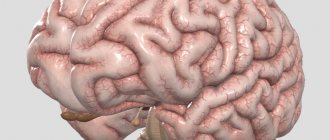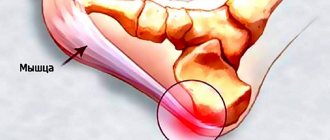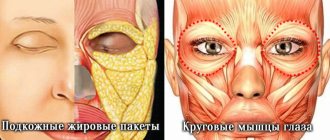Fibromyalgia is a complex disorder characterized by diffuse musculoskeletal pain, the presence of specific painful points, insomnia, depression, a feeling of fatigue and stiffness. This disease is difficult to diagnose due to pain throughout the body. Statistically, the disease affects about 4% of the population. Such patients do not live their usual life, since its quality is significantly reduced. These are mostly middle-aged women.
If you don't know what fibromyalgia is or how to treat it, but the symptoms you are experiencing are similar to those described in this article, contact the CELT Pain Clinic. Treatment of fibromyalgia in Moscow is one of our areas of activity, and in it we have achieved significant success.
Description
Fibromyalgia is a disease characterized by chronic musculoskeletal pain that occurs for no apparent reason.
This disease is chronic and occurs throughout a person’s life. His condition depends on external factors and can periodically improve or worsen. Without specific treatment, the disease leads to a significant decrease in quality of life.
Fibromyalgia affects people of all ages, but it has been noted that women under 45 years of age are affected much more often than men. It is difficult to say why the disease became female, but there is a theory that explains this difference. It is based on studying the level of serotonin in the body of men and women. Serotonin is a hormone that regulates pain, and in fibromyalgia its content is reduced. It was revealed that in men the level of serotonin significantly exceeds the level in women, which explains the difference in the incidence of the disease in women and men.
The exact cause of the disease is unknown. There is an assumption that psycho-emotional stress can provoke the development of fibromyalgia. There is an opinion that various stressful situations even in childhood (divorce of parents, death of loved ones) can lead to fibromyalgia in adulthood. In addition, people with this disease may have a hereditary predisposition, early physical trauma, and in rare cases, the occurrence of fibromyalgia is explained by a complicated course of a viral infection.
The muscle tissue, which is the source of pain, does not become inflamed, so irreversible changes and tissue destruction do not occur. This distinguishes this disease from such diseases as rheumatoid arthritis, systemic lupus erythematosus, polymyositis and others.
Recent research has found that the cerebrospinal fluid and blood plasma of people with fibromyalgia contain inflammatory substances that can increase pain. The constant presence of pain is explained by the development of “pain memory”, against the background of which pain receptors in the body become overly receptive and sensitive. In this case, any, even the most insignificant, irritants can cause a response in the form of pain.
Pathogenesis
Chronic muscle pain that accompanies the disease is caused by prolonged overexcitation of neurons located in the spinal cord. This condition can occur due to injuries, peripheral syndromes, as a result of infectious processes, stress, and hormonal disorders. The main role in the pathogenesis of fibromyalgia is assigned to serotonin and noradrenergic systems. Since the hormone serotonin is responsible for a person’s mood, when its concentration decreases (which happens with fibromyalgia), the patient develops depressive states.
Symptoms
Photo: bookinghealth.info
The main symptom of the disease is the presence of diffuse musculoskeletal pain. The pain is called diffuse if it is present in various parts of the right and left half of the body above and below the waist, as well as in the projection of the spine. The pain varies in nature and can be throbbing, stabbing or aching. Often people cannot accurately determine the location of the pain; it seems to them that not only the muscles, but also the skin, hair, and nails hurt.
In total, there must be 11 painful points out of 18 possible to confirm this disease. In this case, the duration of the pain syndrome should be 3 months or more.
As a rule, the pain is accompanied by a feeling of morning stiffness, a feeling of swelling of the extremities, and paresthesia, which is manifested by tingling or a feeling of “pins and needles” crawling throughout the body. Rapid physical fatigue is observed, and even after stopping physical exercise, muscle fatigue continues for a long time.
Often, the above symptoms intensify with climate change, exposure to stress factors, and also with intense physical activity.
In addition, sleep disturbance is a common symptom of fibromyalgia. In this case, a person has problems falling asleep, sleep becomes interrupted and restless, and the slightest noise can disturb sleep. In the morning there is no feeling of restored strength, but on the contrary, a feeling of weakness appears.
It is also not uncommon to experience frequent headaches, which bother more than half of people suffering from fibromyalgia. These pains occur as a migraine. They are characterized by attacks of severe, excruciating pain in one (less often in both) half of the head.
Considering that pain is a constant companion for a person suffering from fibromyalgia, emotional disorders may occur. They can vary from a slight decrease in mood to a depressive state or an anxious and suspicious state.
In addition to emotional disorders, fibromyalgia may be accompanied by the following disorders: irritable bowel syndrome, premenstrual syndrome, irritable bladder syndrome, fluid retention syndrome, joint hypermobility syndrome.
Literature
- Arinova A. A., Bogdanov E. G., Zaitsev A. A. et al. Journal of neurol and psychiatrist 1994; 94:4:9-13.
- Valdman A.V. Vestn AMS USSR 1980; 9: 11-16.
- Vein A. M., Kolosova O. A., Yakovlev N. A., Karimov T. K. Headache (classification, clinical picture, diagnosis, treatment). M 1994.
- Erokhina L. G. Facial pain. M 1973.
- Zborovsky A. B., Babaeva A. R. Vestn RAMS 1996; 11: 52-56.
- Ivanichev G. A. Clinic, diagnosis, development mechanisms and treatment of myofascial hypertensive syndromes (local muscle hypertonicity): Abstract of thesis. dis. Dr. med. Sci. Kazan 1985.
- Ivanichev G. A. Manual medicine. M 1998; 111-119.
- Kukushkin M. L., Reshetnyak V. K., Vorobeychik Ya. M. Anesthesiol and resuscitator 1994; 4: 36-41.
- Modik O. G. Current issues in the clinic and treatment of neurogenic pain syndromes: Sat. scientific works Saratov 1989; 59-63.
- Tabeeva G. R., Levin Ya. I., Korotkova S. B., Khanunov I. G. Journal of neurol and psychiatrist 1998; 98: 4: 40-43.
- Tuzlukov A.P., Skuba N.D., Gorbatovska N.S., Ivanichev A.S. Arkhpat 1993; 2:55:47-50.
- Fedorova N. E. Ros med zhurn 1996; 1:21-25. 13. Chichasova N.V. Terarch 1994; 66: 11: 89-92.
- Chichasova N.V., Igolkina E.V., Falomeev M.Yu. Ter arch 1994; 66:5:59-61.
- Chichasova N.V., Nasonov E.L., Igolkina E.V. Det rheumatol 1996; 1:26-29.
- Ahles TA, Khan SA, Yunus MB et al. Am J Psychiat 1991; 148: 1721–1726.
- Moldofsky H., Scarisbrisk P., England H., Smythe HM Psychosom Med 1975; 37: 341–351.
- Moldofsky H., Scarisbrisk P. Psychosom Med 1976; 38: 35-44.
- Moldofsky H. Rheum Dis Clin North Am 1989; 15: 91-103.
- Travell JG, Simons DG Myofascial pain and dysfunction: the trigger piont manual. Baltimore 1983.
- Vaeroy H., Abrahamsen A., Forre O. et al. Clin Rheumatol 1989; 8: 245–250.
- Welin M., Bragee B., Nyberg F. et al. J Muskul Pain 1995; 3:1:4.
| Fibromyalgia on Wikimedia Commons |
Diagnostics
Photo: doctor-neurologist.ru
It often takes a long time to make a diagnosis. Firstly, fibromyalgia occurs in a similar way to various other diseases. It is often hidden behind chronic fatigue syndrome, tension headaches, increased sensitivity to changes in environmental temperature and climate, dysfunction of the temporomandibular joint, chronic abdominal pain and functional bowel disorders. Therefore, diagnostic studies are required to exclude other diseases, after which fibromyalgia is diagnosed. Secondly, there are no accurate tests and analyzes that speak in favor of fibromyalgia.
However, there are criteria on the basis of which the disease in question is diagnosed. These include:
- Widespread pain lasting 3 months or more;
- The presence of muscle points sensitive to palpation (touch), which are located in both halves of the body, both in the upper and lower parts. The presence of 11 painful out of 18 possible muscle points is also taken into account.
A total of 9 areas are subject to palpation:
- occipital region;
- lower cervical region;
- trapezius muscle;
- supraspinatus muscle;
- second rib;
- lateral epicondyle of the humerus;
- gluteal region;
- greater trochanter of the femur;
- knee joint area.
To identify painful points, the doctor applies increased finger pressure to the area being examined. The result is considered positive if the person feels pain during these actions of the doctor. To eliminate the factor of subjectivity, it is recommended to re-identify the painful points by different people.
What criteria exist for making a correct diagnosis?
There is a special questionnaire that consists of 6 questions. If the answer is positive, not the majority of them, the patient is subjected to a more thorough examination for fibromyalgia.
The main criteria for diagnosis are the following:
- diffuse pain;
- the duration of pain is more than 3 months;
- fibromyalgia points - the presence of points, when pressed on, the pain intensifies;
- increased fatigue;
- stiff joints;
- lack of an active life position and aspiration;
- difficulties in performing everyday tasks;
- hyperesthesia;
- insomnia;
- deterioration of attention and memory.
Treatment
Photo: medapteka.net
Treatment of fibromyalgia is complex and includes medications and non-drug methods of influencing the symptoms of the disease.
Nonsteroidal anti-inflammatory drugs (NSAIDs) are taken as medications. Preference is given to local therapy in the form of ointments, gels, since long-term use of systemic drugs can lead to non-steroidal gastropathy, erosion and ulcers of the gastrointestinal mucosa. In the case of severe pain, the use of narcotic analgesics is allowed, since their clinical effect is much broader than NSAIDs. However, their use is rational only in case of unbearable pain, which does not go away even after absolute compliance with the doctor’s recommendations and responsible use of all complex therapy drugs.
It is also considered advisable to include muscle relaxants in therapy, which help reduce muscle tone, thereby achieving an analgesic effect.
Considering that the clinical picture of the disease includes a mood disorder, which in some cases can reach the level of depression, the prescription of antidepressants is considered important.
A common accompanying symptom of fibromyalgia is sleep disturbance. This phenomenon can be corrected with the help of sedatives, in particular herbal remedies, or, if taking these drugs does not bring relief, sleeping pills are used.
In addition, non-pharmacological treatment methods are used. For example, physiotherapeutic procedures, in particular massage, balneotherapy, cryotherapy. Cryotherapy involves visiting a cryochamber or cryocapsule in which liquid nitrogen is sprayed. Despite the low temperature that forms inside the cryocapsule/cryochamber, only the superficial layers of the skin are cooled; the human body does not suffer systemically. Balneotherapy is a set of procedures that are performed using fresh, mineral or sea water. During such procedures, our body is favorably affected by specially selected water temperature, and the composition of the water used during the session is also an important factor. As a result of balneotherapy treatment, changes in metabolism are observed, the immune system is stimulated, and the body's resistance to various diseases and stress increases.
The listed methods of physiotherapeutic treatment are carried out after the exacerbation of the disease has been eliminated with the help of medications (pain syndrome has been relieved).
What is fibromyalgia?
Fibromyalgia is a chronic disease characterized by widespread pain that is often accompanied by fatigue, depression, sleep disturbances, cognitive impairment, and digestive and urinary symptoms.
It is a poorly understood condition in which pain signals processed by the brain appear exaggerated, increasing the sensation of pain in muscles and soft tissues. There are no tests to detect this condition, so fibromyalgia is diagnosed by ruling out other possible causes.
Treatment may include over-the-counter pain relievers, antidepressants, physical therapy, self-care, and medications specifically approved for fibromyalgia, such as Lyrica (pregabalin).
Medicines
Photo: belive.ru
The main group of drugs that relieve pain are nonsteroidal anti-inflammatory drugs (NSAIDs). In the treatment of fibromyalgia, preference is given to local forms (ointments, gels), since in this case the risk of side effects is reduced. In addition, topical preparations provide a high concentration of the active substance at the site of application, which makes it possible to act on immediate areas of pain. Examples of such products are: Nise gel, Dolaren gel, Viprosal B, Voltaren emulgel.
It must be remembered that ointments and gels containing NSAIDs should be applied to intact areas of the skin; it is also recommended to avoid contact with the mucous membrane of the eye and other mucous membranes. If an allergic reaction or symptoms of overdose develop, rinse off the product immediately with warm water.
If taking topical agents containing NSAIDs does not relieve pain, it is recommended to switch to systemic NSAIDs. You can use both tablet forms and injectable forms (if tablets do not help). A good analgesic effect is expressed in nimesulide, analgin, diclofenac and meloxicam. Of the injectable drugs, ketorolac is considered the best.
In rare situations, when this group of drugs did not give the expected result and the pain syndrome was not relieved, they resort to the help of narcotic analgesics. An example of this group is tramadol, which is used in both tablet and injection form. Narcotic analgesics can cause drug dependence. Although tramadol has a low narcotic potential, it is recommended to avoid long-term use.
Also, for fibromyalgia, muscle relaxants are used, the action of which is aimed at eliminating spasm, which leads to relaxation of skeletal muscles. Due to this effect, pain relief is achieved. For this purpose, baclofen or sirdalud is prescribed. Baclofen is famous for its rapid onset of action, while sirdalud is known for the fact that in addition to its muscle relaxant effect, it also has an analgesic effect, which has a beneficial effect on the treatment of fibromyalgia.
Antidepressants are prescribed in cases of severe mood disorder. Since a person is constantly accompanied by pain, the development of depression against this background is not a rare occurrence. The choice of a specific drug is made by a qualified doctor, the drug is issued strictly according to the prescription. Amitriptyline or fluoxetine is often prescribed. You should be especially careful when taking these medications. The fact is that if you abruptly stop taking the drug (without the knowledge of the doctor), the so-called withdrawal syndrome may develop. It manifests itself as increased fatigue, headache, nausea, and irritability. Therefore, it is extremely important to follow all the doctor’s recommendations and not discontinue the drug on your own.
For sleep disturbances, the sleeping pill zopiclone can be used. This drug helps reduce the period of falling asleep and reduces the number of night awakenings. Since the drug begins to act 30-40 minutes after administration, it is recommended to take it an hour before planned sleep. The effect lasts for 6-8 hours.
Living with Fibromyalgia
Living with fibromyalgia is challenging. Work with your doctors and alternative therapy specialists to find treatments that work for you. Each person is different, and what works for one person may not benefit another. If you find yourself feeling lonely or unable to cope with your condition, look for a local or online support group. Connecting with other people who understand what you're going through can be incredibly helpful.
Folk remedies
Photo: spina-sustav.ru
Considering that stress is a provoking factor for the development of fibromyalgia, it is recommended to stabilize the psycho-emotional state. To do this, you should eliminate stressful situations from your life as much as possible, and you can also try to learn relaxation techniques.
Particular attention is paid to nutrition. It is recommended to increase the consumption of foods containing calcium and magnesium (almonds, hazelnuts, cashews, seaweed, beans, peas, buckwheat and millet cereals). Also, do not avoid foods with a high content of omega acids (sea fish, eggs, vegetable oil). The consumption of all soy products and products containing large amounts of nitrates is prohibited. In addition, you should limit yourself to caffeine, baked goods and sweets.
Also in folk medicine, various compresses, tinctures and herbal decoctions are used to relieve the symptoms of fibromyalgia. They will help strengthen muscles and also stimulate the immune system.
For example, Schisandra chinensis can not only increase physical performance, but also relieve fatigue and have a calming effect. To prepare the infusion, you will need 10 g of crushed fruits, which are poured with 100 ml of boiling water. After the infusion has cooled, you need to strain it. The finished infusion should be taken 1 tablespoon 2 times a day. The duration of the course is 1 month.
A plant such as Leuzea has a beneficial effect in the treatment of fibromyalgia. This is a perennial herbaceous plant growing mainly in the Altai mountains, in Eastern and Western Siberia and in Central Asia. In Siberia, the plant is known as “maral root” or “deer grass.” The root of this plant relieves symptoms of physical fatigue, eliminates sleep disturbances, improves overall well-being, and also increases mental performance.
Essential oils are used to rub muscles. For example, you can mix 2 drops of chamomile and 10 drops of rosemary essential oil. The finished mixture should be rubbed into the area of pain points with light massaging movements.
The information is for reference only and is not a guide to action. Do not self-medicate. At the first symptoms of the disease, consult a doctor.
Which doctor should I contact?
When symptoms of fibromyalgia appear, patients begin to unsuccessfully go from one specialist to another, and most often these specialists do not detect pathology that would be associated with their specialization. You need to contact a rheumatologist; it is this doctor who can make a diagnosis and prescribe treatment appropriate to the situation. In some cases, he may refer the patient for consultation to specialists.
There are no benefits for patients with fibromyolgia, since this pathology does not provide for exemption from work or a pension.
Nutrition
With fibromyalgia, every little thing, every detail matters. Nutrition must be regulated, the daily menu is compiled based on the recommendations of doctors.
It is necessary to pay attention to the food system and establish basic principles, that is, limit:
- Level of intake of aspartame, which is a sweetener. After all, it is he who provokes the exacerbation of the clinical picture of the disease.
- Reduce the amount of nutritional supplements that increase pain.
- Reduce the level of coffee, tea, chocolate consumed.
- Eliminate copious amounts of potatoes, peppers, tomatoes and eggplant.
- Reduce the amount of fermented milk products.
Complementary therapy
The effectiveness of treatment can be increased with the help of additional therapy methods. They can only be used after consulting a doctor. Some may be incompatible with the individual characteristics of the patient or the medications prescribed for fibromyalgia.
Effective methods of therapy:
- psychotherapy – during special sessions, the psychotherapist will help the patient develop a correct outlook on life, get rid of negativity and reduce the level of anxiety;
- physical therapy – moderate physical activity reduces pain, suppresses many symptoms, and helps normalize the condition for a long period;
- massage – relieves stiffness that occurs with fibromyalgia in the morning, and also improves blood circulation in the muscles, which has a positive effect on well-being and quality of sleep;
- acupuncture - acupuncture helps to neutralize many symptoms of the disease, improve mental state, and also reduce the number of areas on the body where pain occurs;
- cryotherapy - the use of liquid nitrogen allows you to cool the affected areas of the body, the result is the suppression of muscle spasms, stimulation of blood circulation and relief from most symptoms;
- apitherapy - the use of bee venom, pollen, wax or royal jelly will be effective for treatment, which leads to the restoration of muscle tissue and the relief of symptoms.
Together with these methods, you can use biofeedback therapy, hydrotherapy or hypnotherapy. Most often, the doctor chooses only one or two methods in order to moderately supplement the main method of treatment and not harm the body.
Prevention
With the help of preventive measures, you can minimize the risk of developing fibromyalgiaif there is a hereditary predisposition.
Preventive measures:
- normalization of the diet - you should avoid highly processed foods, give up artificial sweeteners and alcohol, and also increase the amount of fruits and vegetables you consume;
- restoration of sleep - you need to sleep for at least 7-8 hours, going to bed no later than 12 o'clock at night, while it is important to create the most suitable environment for sleep, eliminating the negative impact on its quality;
- increasing physical activity - regular walking or light jogging should become an integral part of life, while sitting or lying down should be reduced to a minimum; aerobics, yoga or swimming are also good options;
- minimizing stress – it is important to try to minimize the amount of stress in your life by being less sensitive to unpleasant situations at work and at home.
It is also important to monitor your health. If problems arise, you should immediately consult a doctor and begin appropriate treatment. This is especially true for intestinal-related diseases.
Treating fibromyalgia at home is not that difficult. It is enough to follow the doctor’s recommendations and take all the medications prescribed by him. If this is supplemented with other methods of therapy, the effectiveness will become even higher. Despite the chronic nature of the disease, it is still possible to cope with the symptoms. Therefore, it is very important to take care of yourself and your treatment, and not give up.
Trigger points or pain points
The development of the disease - fibromyalgia, first of all, begins with increased sensitivity in specific places - points. They can be either around the joints or located chaotically, making themselves felt when pressed.
The dots themselves have small parameters - like coins. But the sensitivity in this particular area is much higher than in others. This is especially noticeable in the neck, back, chest, hips, buttocks, and elbows.
When diagnosing, as a rule, 18 points are identified, their location:
- Above the waist.
- Below the waist.
- On the front side of the body - in front of the neck, on the chest, on the elbows.
- On the back side of the body - in the back of the head, on the shoulder, at the top of the back or at the bottom.
Trigger points usually develop in combination with a disorder of the musculoskeletal system of chronic origin. In this case, the trigger itself is expressed as a hypersensitive part, which is located above the muscle fiber.
Trigger points











